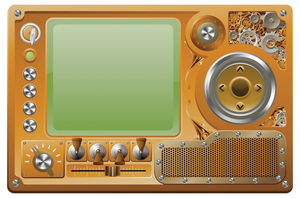Cool Controls
The doctor upgrades a conference slide projection apparatus and adds a retro-clicker with some Python code to keep his talks moving forward.

Lead Image © Christos Georghiou, 123RF.com
The doctor upgrades a conference slide projection apparatus and adds a retro-clicker with some Python code to keep his talks moving forward.
In an earlier edition of Raspberry Pi Geek magazine [1], I looked at a basic Raspberry Pi "presentation machine," in which I used a Rasp Pi generation 1 device to display slides during my conference tech talk at OSCON (Figure 1).
The experiment proved that the use of unique, one-off devices in my show can bring a lot of attention and new conversations to the conference experience. Since then, I've taken it to the next level by combining my fascination of Steampunk [2] with my tech talk gadgets.
In this issue, I'll look at the mods and upgrades that make up the second generation presentation machine: the "Conference Presentation and Manipulation Apparatus." Recent talks with the gen 2 device have gone well, and audiences seem to appreciate homemade, "exotic" hardware before, during, and after the show.
[...]
Pages: 6
Price $15.99
(incl. VAT)